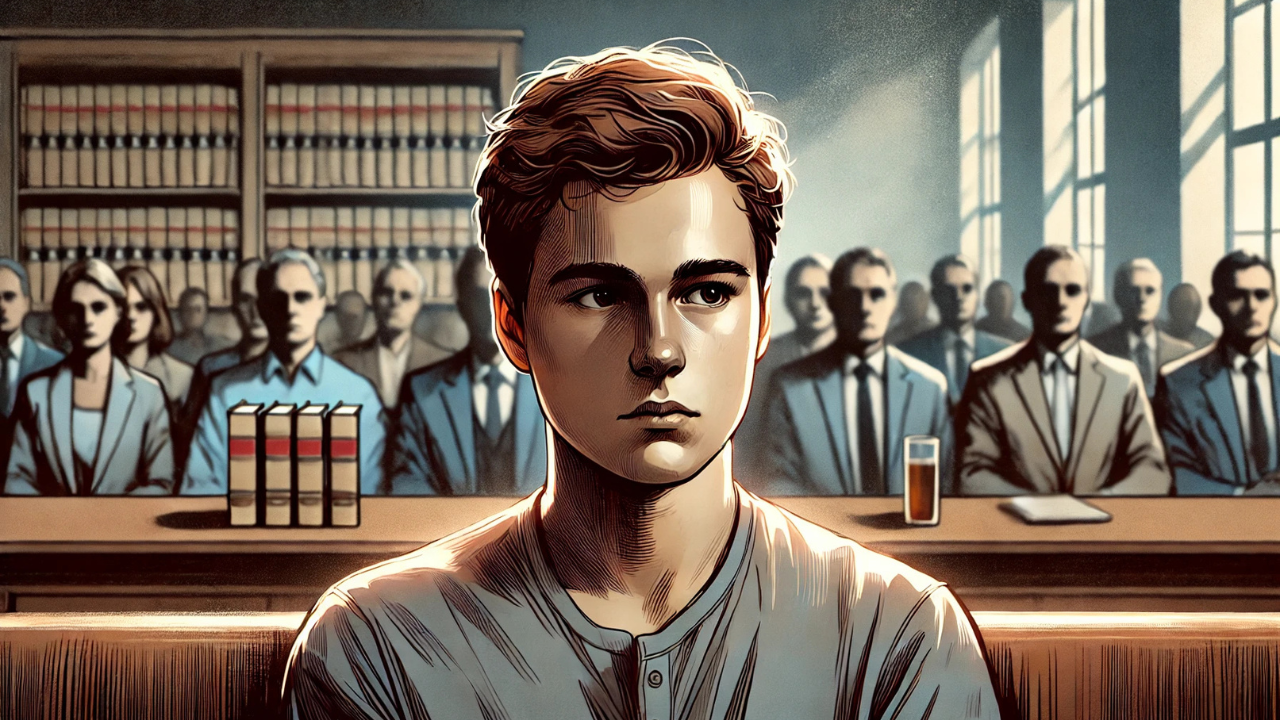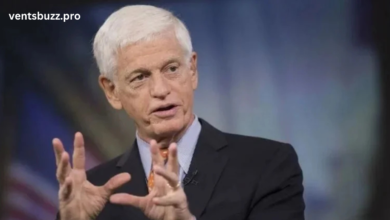1. Introduction to Cameron Herrin
Cameron Herrin, a name that has become infamous in the public eye, became the focal point of one of the most talked-about legal cases in recent years. cameron herrin His story is one of youth, poor decisions, and tragic consequences. Cameron, a young man from Tampa, Florida, was involved in a fatal car accident in 2018 that would change his life forever. His involvement in the accident, the ensuing trial, and the media frenzy that followed sparked debates across the nation on issues of justice, accountability, and the consequences of reckless driving.
The tragic event occurred when Cameron, then 18 years old, was driving his vehicle with his friend, and they were reportedly racing another car on a public road. The high-speed race resulted in the death of Jessica Reisinger-Raubenolt, a mother of a young child. This incident instantly garnered widespread media attention, raising questions about the nature of street racing, the speed of justice, and the youth of the accused.
The case gained particular attention because Cameron Herrin was seen as a young, promising individual who, like many others, made a catastrophic mistake. What followed was a lengthy legal battle, intense media scrutiny, and public outcry. Today, Cameron Herrin’s story remains a tragic reminder of the consequences of dangerous driving, especially among young people.
2. The Incident: What Happened That Day?
The day of the tragic incident was a typical, sunny afternoon in Tampa, Florida. Cameron Herrin and his friend, who was also in the car, were reportedly driving at high speeds when they encountered another vehicle. The race began, and in mere moments, the lives of those involved would be forever changed. As the two cars raced down the street, Cameron’s car collided with Jessica Reisinger-Raubenolt, who was crossing the road with her 21-month-old child. The collision resulted in the death of Jessica and left her child injured.
The details of the accident were made public as part of the investigation, which revealed that Cameron was driving at an excessive speed in a residential area. According to police reports, he was racing a Mustang at speeds exceeding 100 mph, far beyond the speed limits for public roads. The impact of the crash was devastating, and while Cameron’s car and the car he was racing with were damaged, the ultimate cost was human life.
Jessica’s family was left grieving, and the entire community felt the emotional weight of the incident. In the following days, the public began questioning whether such reckless behavior should be met with a harsh penalty or some form of leniency, given Cameron’s age and seemingly good character. The controversy surrounding the incident was just beginning, with many people divided on the issue.
3. The Legal Journey: Trials and Sentencing

In the aftermath of the accident, Cameron Herrin was charged with vehicular manslaughter and reckless driving, among other offenses. The legal process that followed was extensive, as the court system worked to determine whether Cameron would be held fully accountable for the death of Jessica Reisinger-Raubenolt.
Throughout the trial, Cameron’s defense team argued that he did not intend to cause harm and that his actions were the result of poor judgment, not malice. This defense resonated with some members of the public who believed that the young man deserved a second chance. However, the prosecution argued that Cameron’s reckless driving, especially in a residential area, was a clear violation of the law and resulted in the unnecessary loss of life.
In the end, the court found Cameron Herrin guilty and sentenced him to a prison term. The sentencing sparked further debate across social media platforms and news outlets. Some argued that the penalty was too severe, while others believed it was a necessary consequence for someone who had acted with such disregard for the safety of others. The public discourse on the case also included discussions on the role of social media in shaping public opinion, with many people taking to platforms like Twitter to express their views.
The sentencing highlighted a key issue: the intersection of justice, fairness, and youth. While many saw Cameron as a young man who made a tragic mistake, others believed that the gravity of the accident necessitated a strong punishment to send a message about the consequences of reckless driving.
4. Public Response and Media Coverage
The public response to Cameron Herrin’s case was overwhelming. As with many high-profile trials, the case became a viral topic across social media platforms, with people from all walks of life expressing their opinions. The media played a significant role in shaping public perception, with news outlets highlighting the tragic loss of life and the legal battle that ensued.
Social media, in particular, became a battleground for opinions. Supporters of Cameron Herrin argued that he was a young man who had made a mistake and deserved another chance. They pointed to his age, his clean criminal record, and his apparent remorse as reasons to show leniency. On the other hand, those who supported the victims’ families felt that the penalty was too lenient and that justice had not been served.
This division in public opinion was fueled further by viral videos, online petitions, and hashtags that spread across platforms like Twitter, Instagram, and TikTok. The public’s emotional investment in the case was palpable, with people from all over the country sharing their thoughts on the appropriate punishment for Cameron.
In addition to the online debate, the case sparked larger conversations about street racing, youth driving behavior, and the influence of social media on legal matters. As the trial and its aftermath unfolded, the media and public continued to engage in heated discussions about the balance between justice for the victims and compassion for a young person who had made a life-altering mistake.
5. The Aftermath: Consequences and Lessons Learned
The aftermath of the Cameron Herrin case left deep emotional scars on all involved, especially the victims’ families. The case prompted many to reevaluate the risks associated with street racing and reckless driving, leading to a surge in public campaigns aimed at raising awareness about road safety.
For Cameron, the consequences of his actions were profound. Not only did he face legal repercussions, but the emotional toll of causing a loss of life would stay with him for the rest of his life. In the years following his sentencing, Cameron became a symbol for the dangers of street racing and reckless driving. His case became part of broader discussions about the need for stricter laws and more comprehensive education for young drivers.
The case also left a lasting impact on the community in Tampa, as residents came together to mourn the loss of Jessica Reisinger-Raubenolt and advocate for changes in how the justice system addresses cases involving young offenders. Public awareness campaigns about the dangers of street racing gained traction, with the hope of preventing similar tragedies in the future.
In the larger context, Cameron Herrin’s story serves as a cautionary tale for young drivers across the nation. It highlights the importance of responsible driving and the devastating consequences of reckless behavior, especially on public roads where innocent lives can be impacted.
6. Conclusion
The story of Cameron Herrin is one of tragedy, mistakes, and the long-lasting consequences of reckless behavior. From the heartbreaking loss of Jessica Reisinger-Raubenolt to the intense public debate about justice and accountability, this case has raised important questions about how we, as a society, deal with such incidents.
At its core, the case is a reminder of the importance of road safety, the need for personal responsibility, and the far-reaching effects that one moment of reckless behavior can have on individuals and communities. Whether one agrees with the trial’s outcome or not, the case has made an indelible mark on the public consciousness and will likely serve as a touchstone for future discussions on justice and accountability in similar cases.
7. Frequently Asked Questions (FAQs)
1. What was the exact nature of the crime Cameron Herrin committed?
Cameron Herrin was involved in a fatal car accident where he was racing another car at high speeds and collided with a pedestrian, resulting in the death of Jessica Reisinger-Raubenolt.
2. How long was Cameron Herrin sentenced to prison?
Cameron Herrin was sentenced to 24 years in prison for his involvement in the fatal accident.
3. Why did the public have such strong reactions to the case?
The public response was divided, with some advocating for leniency due to Cameron’s age and remorse, while others felt the severity of the incident warranted a harsher punishment.
4. What is the current status of Cameron Herrin after the trial?
Cameron Herrin is currently serving his sentence, but his case continues to draw attention in discussions about street racing and road safety.
5. How did social media affect the public perception of the case?
Social media played a significant role in shaping public opinion, with debates on platforms like Twitter and Instagram influencing how people viewed Cameron’s actions and the fairness of the legal proceedings.




